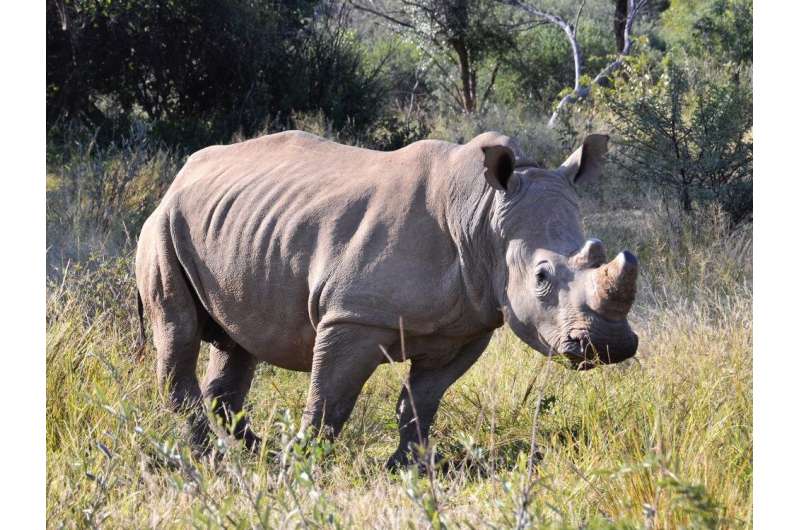This article has been reviewed according to Science X's editorial process and policies. Editors have highlighted the following attributes while ensuring the content's credibility:
fact-checked
trusted source
proofread
Better synthesis of geospatial data may help combat poachers, scientists say

Poaching wild animals poses global environmental risks, from threatening the survival of keystones species to potentially spreading animal-borne diseases to humans. Technology like unmanned aerial vehicles, or drones, can help combat poachers, but finding the best way to use the large amounts of geospatial data generated by these tools remains a challenge, according to Penn State scientists.
"Poaching is a big problem," said Wendy Zeller Zigaitis, a doctoral student in the Department of Geography at Penn State. "Technology can help, but we have to understand how to look at all the data we are collecting and synthesize that information."
Rangers overseeing protected areas today can use drones, imagery from airplanes and satellites, trail cameras and other technology to observe how animals and poachers are moving across their wide swaths of land. But no one system can provide enough information to counteract poaching by itself, the scientists said.
Yet much of the research on technology in wildlife conservation over the last decade has focused on single devices, like drones, Zeller Zigaitis wrote in a review recently published in the journal Annals of GIS. She said the work reveals a gap in our knowledge of how protected area practitioners make sense of the geospatial data collected within their borders.
"There's a lot of research out there using one particular sensor or another to combat poaching," Zeller Zigaitis said. "But I found most were looking at one piece of the puzzle, not the overall holistic picture. In the end, it's bringing all that data together and making sense of it that that is wanting to help you understand patterns and trends within a particular area."
The scientists said future work should aim at synthesizing data from these devices and human-generated data—like pen-and-paper observations from ranger logs or notes and pictures—of animals or shell casings—manually input into phone apps or written in log books.
"What we found is more work needs to be done on understanding this analog geospatial data that's being collected," Zeller Zigaitis said. "We need to make that a useful piece of the puzzle, along with the data that we get from technology."
Synthesizing this data and packaging it in a way that practitioners can visualize and use as a tool may be the best way to approach poaching mitigation, the scientists said. This approach could help rangers, for example, decide which devices would work best and in what locations on their land.
"It's a movement problem," Zeller Zigaitis said. "The animals are moving, and the poachers are following. Rangers may stick to these predefined routes and the poachers are trying to avoid them. So one piece is narrowing down where to put new sensors and helping direct the rangers where to go."
Creating standardized tools could also help practitioners better understand trends and movements across protected area boundaries. Poachers don't stop at the boundaries of these parks, the scientists said. And, especially on the African continent, crossing park boundaries may mean crossing international borders.
"What I've found doing site visits is that you may share an international boundary between parks," Zeller Zigaitis said. "But the country level databases are different from country to country, and they don't always talk to each other. If you don't understand the data at the basic level, it's hard to share that across boundaries."
The scientists said they expect future research will fill knowledge gaps at the intersection of human and animal movement patterns from synthesized data. Improved tools to synthesize and visualize this data could not only help address poaching, but also other crime-related issues.
"We're trying to understand how people process individual data observations to make sense of complicated situations—and spatial location is often the common ground people need to take that step," said Anthony Robinson, associate professor of geography, Zigaitis' adviser and co-author on the paper. "We need better ways to transform data into action to address key problems across people and the environment."
More information: Wendy L. Zeller Zigaitis et al, Sensemaking in the Wild: A Review of Practitioner Collected Geospatial Data and its Synthesis within Protected Areas for Poaching Mitigation, Annals of GIS (2023). DOI: 10.1080/19475683.2023.2192761
Provided by Pennsylvania State University



















